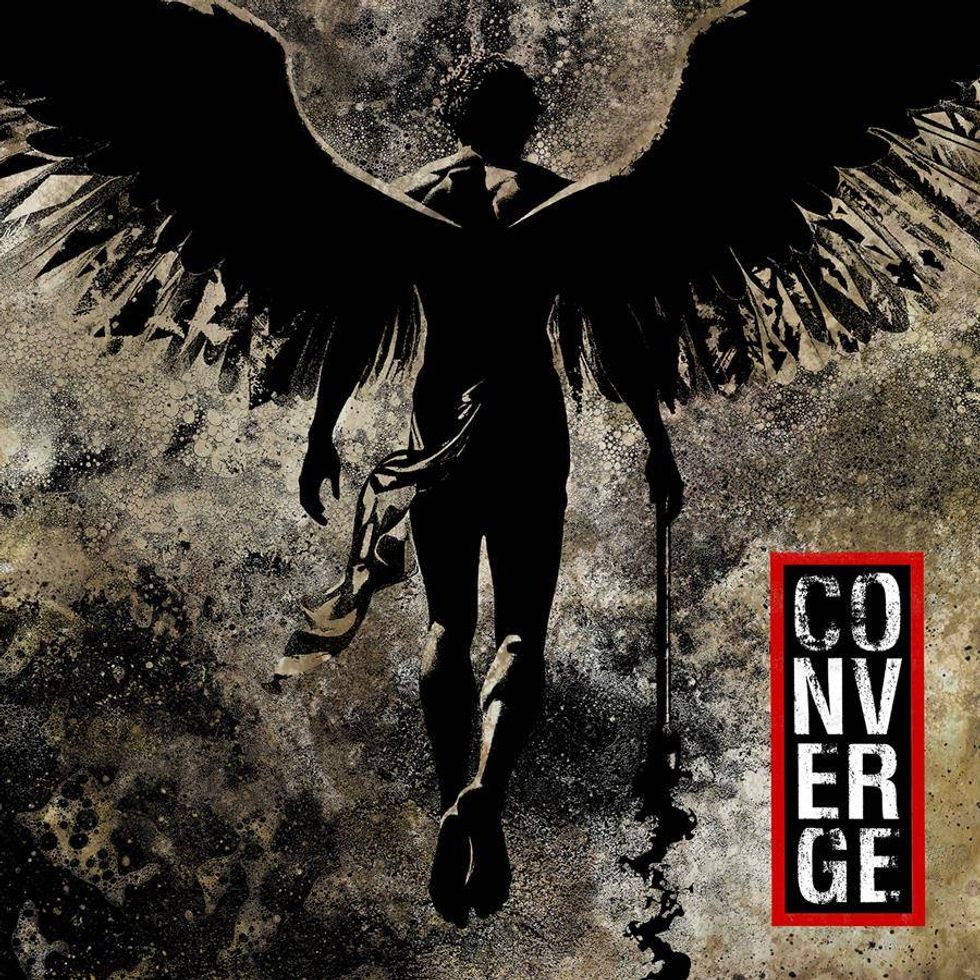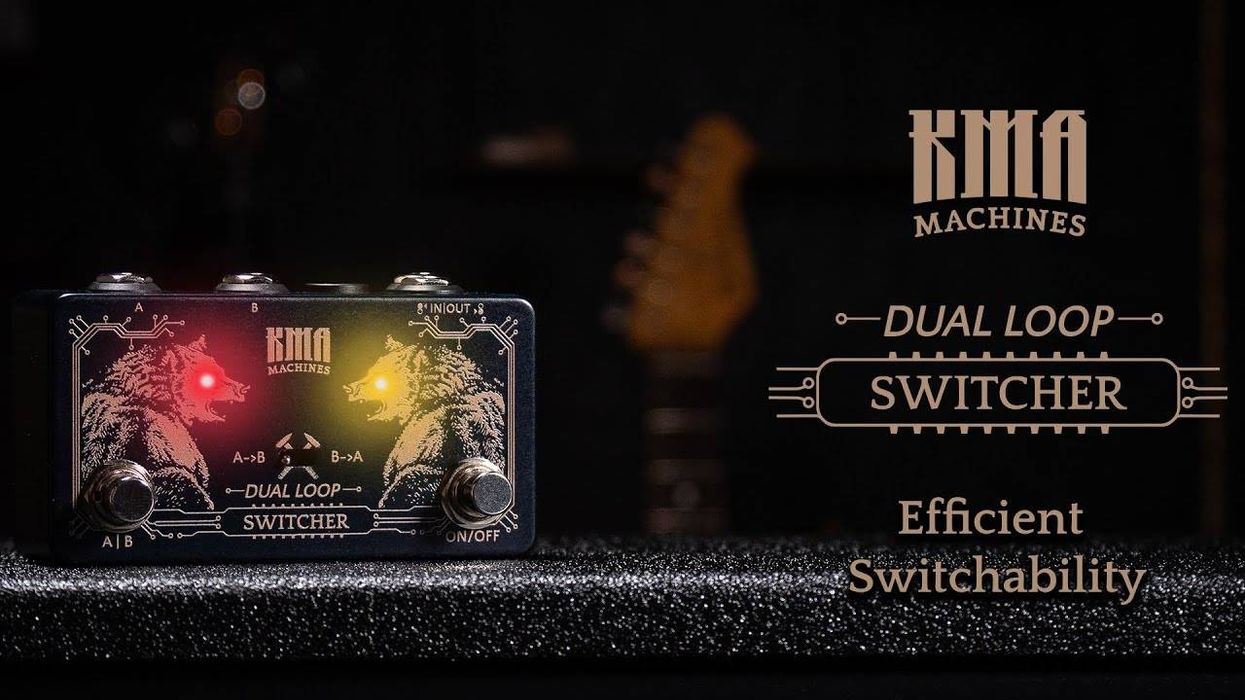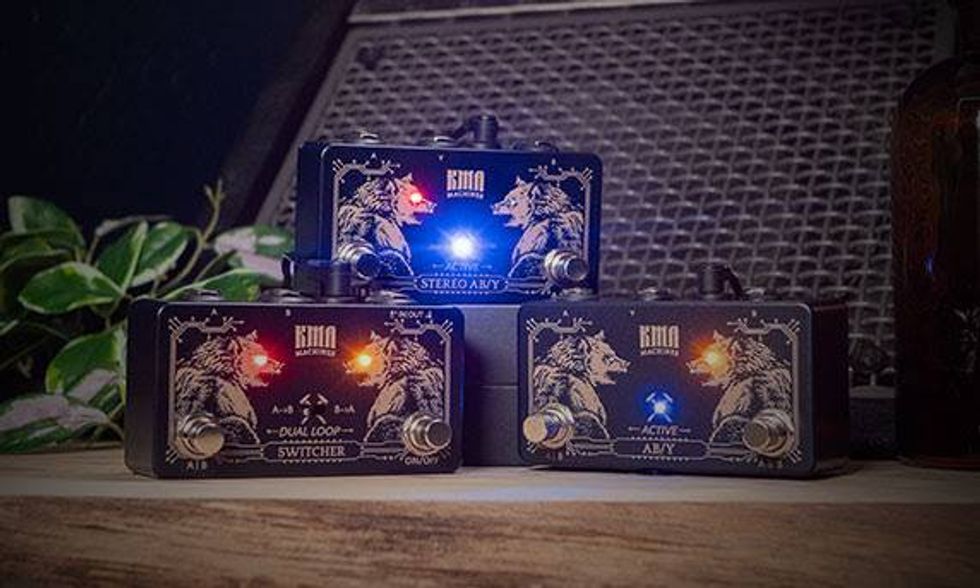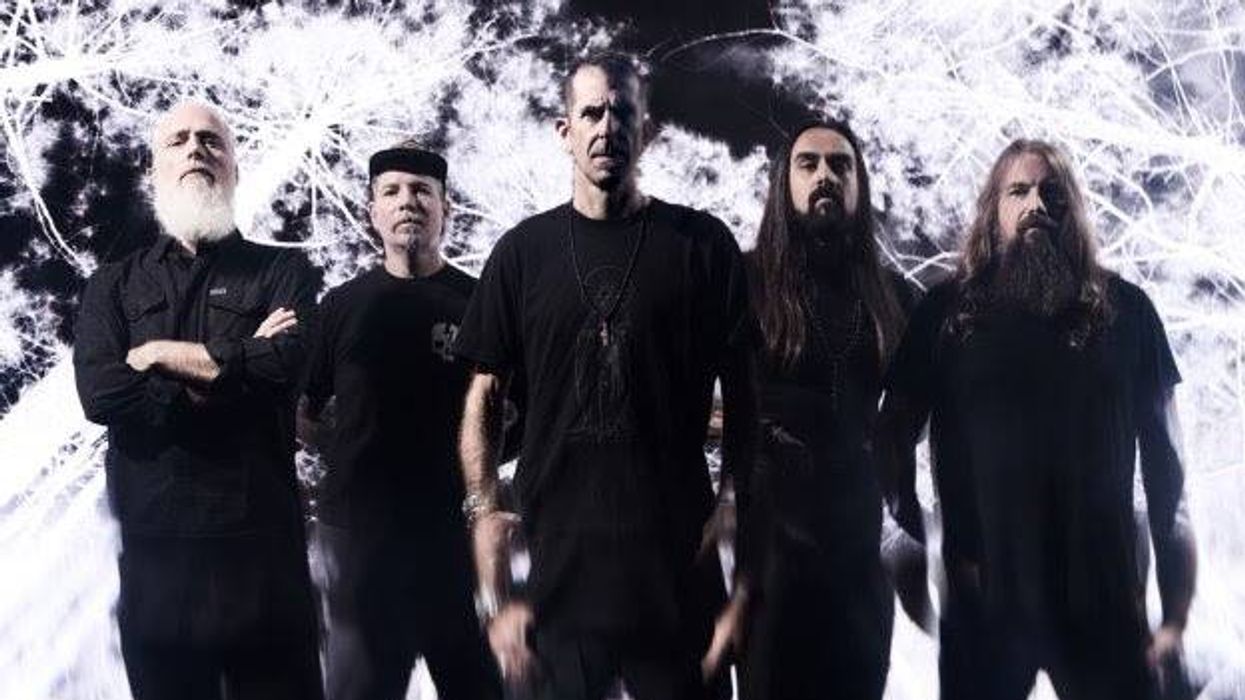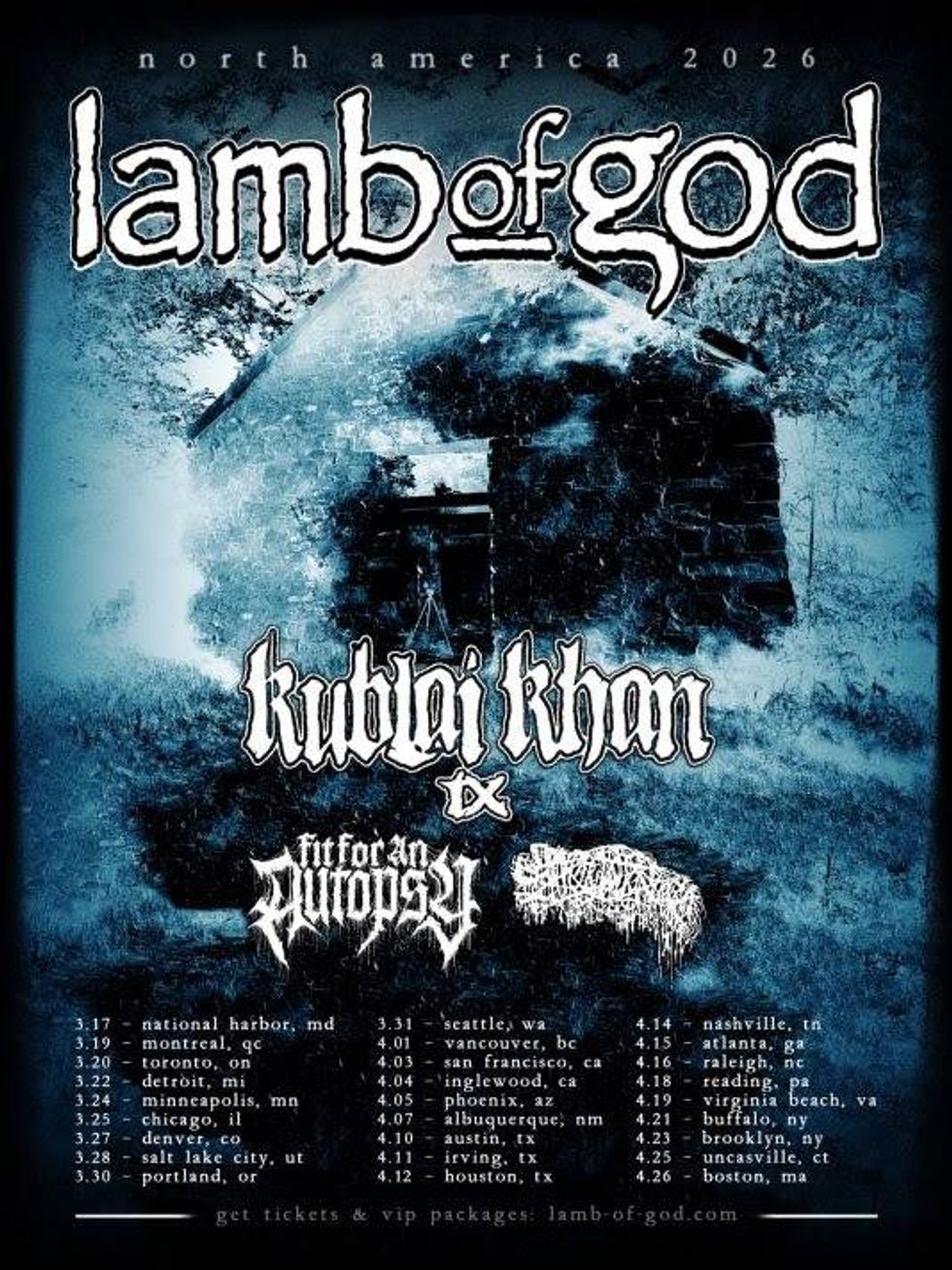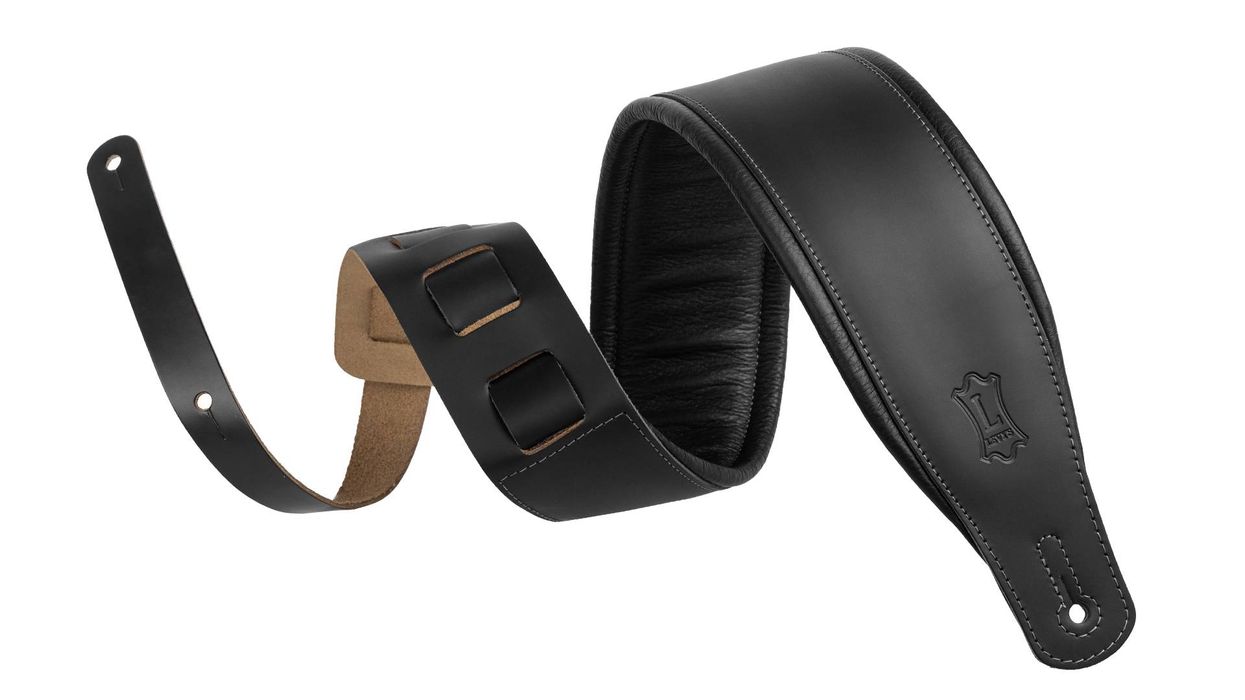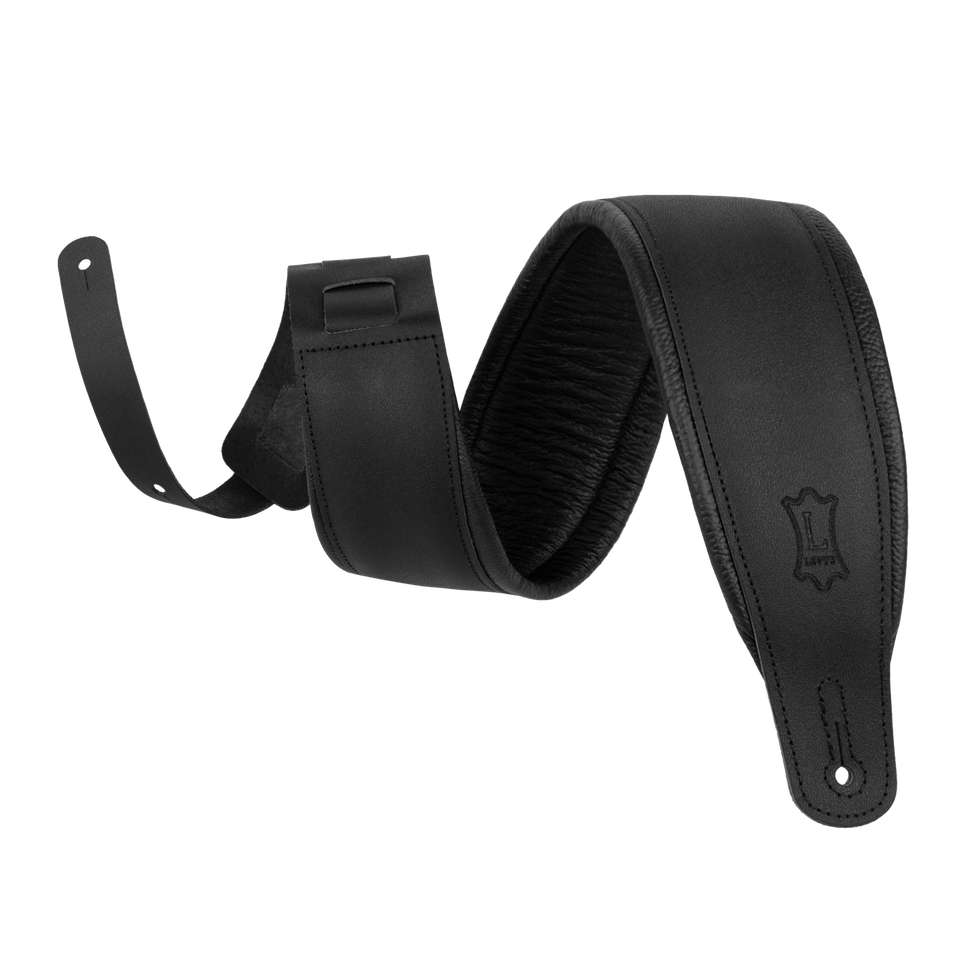On the heels of the successful launch of limited-edition Slash Signature SL-100 Head and SL-4×12 Speaker Cabinet, Magnatone announces the new Slash Signature Collection Blackout edition.
Wrapped in a sleek black 100% cotton croc textile (that ages beautifully), this Slash-designed amp has the same, hand-built specs, components and features of the limited edition green anaconda SL-100 Head and SL- 4×12 Speaker Cabinet, but comes out roaring with its own Blackout attitude.
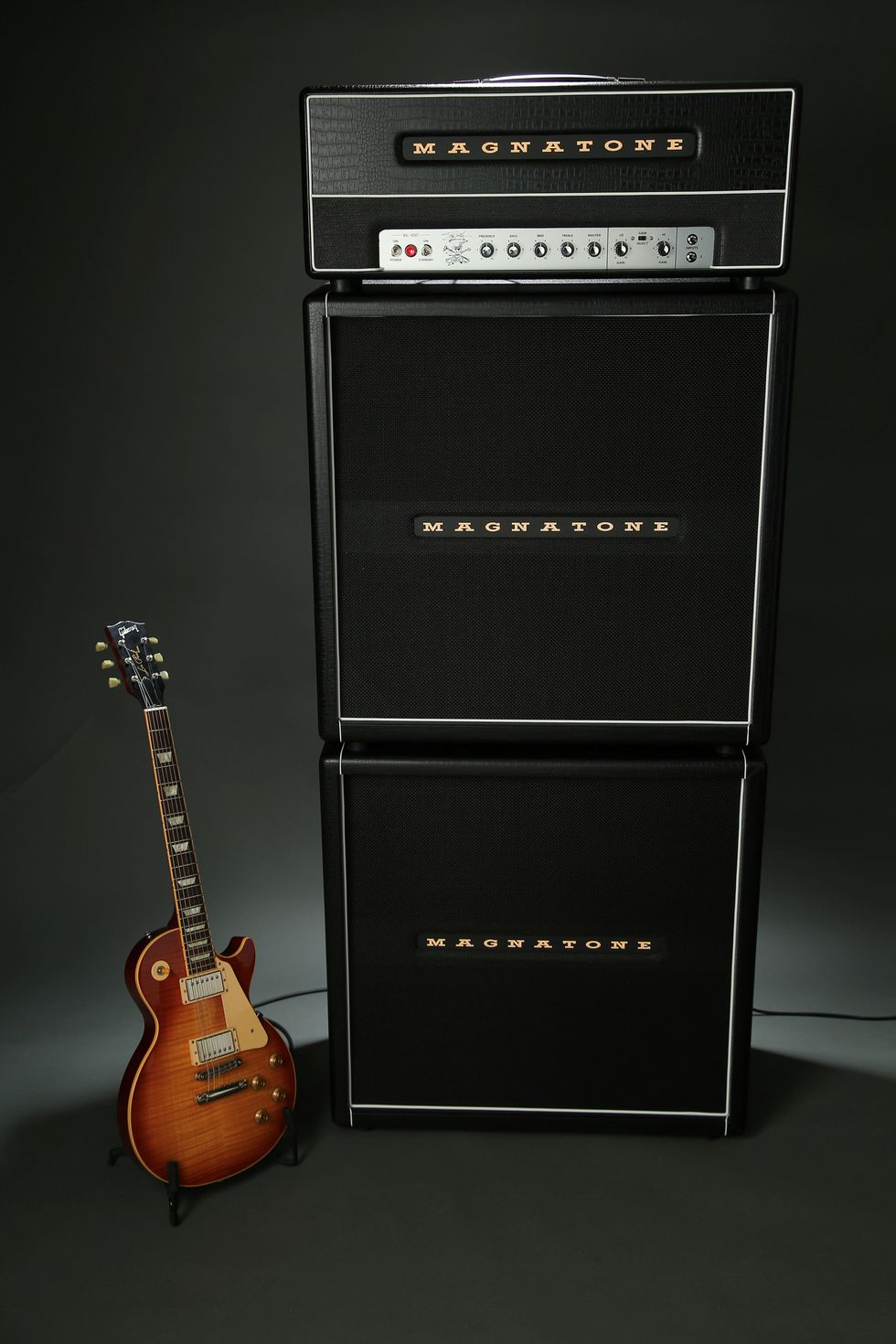
“I’ve become a big fan of the Magnatone sound, and it’s been an honor to help design a 100- watt amp with them. I think we put the Magnatone tone and clarity together with some raw power and crunch. The combination is aggressive and sweet simultaneously, it’s pretty awesome,” said Slash.
The Blackout Edition is powered by four EL-34 tubes, delivering exceptional headroom, clarity, and the grit-n-grind tone Slash has made his own, both live and in the studio. The SL-100 pre- amp uses four 12AX7/ECC83 tubes with two distinct gain modes. Players can switch between “LO” and “HI” settings via a control panel slide switch or one-button footswitch (included).
The LO gain mode is voiced with 60’s Classic Rock tones in mind, and they’re slightly tweaked to better control the icepick highs in today’s music. Using a guitar with humbuckers fully cranked, the low gain control has a medium crunch that is sublime in depth and tonal quality.
The HI gain mode is designed with a cascaded gain pre-amp style that’ll bring back some 80’s modded memories, and it’s been fine-tuned to optimize the sound for Slash’s heavy-duty humbuckers sound. But, the gain doesn’t mask the guitarist’s tone (like some amps), so clarity and the voice of the guitar stay true. The treble control boosts the highs for pick clarity, but without being overly harsh.
Magnatone and Khan developed the SL-100 to meet SLASH’S needs. A lot of thought went into the mods, which were made using a stock Super Fifty-Nine M-80.
The control panel of the SL-100 is a easy-to-adjust-on-the-fly four-band EQ with Treble, Middle, Bass, and Presence, so any player of any level can dial their guitar voice easily. The 100-watt power amp allows the EQ to have clarity and focus – essential in sound tweaking.
The Blackout 4×12 speaker cabinet is loaded with four Celestion Vintage 30 speakers – Slash’s speaker of choice. They deliver warm tone, smooth and creamy breakup and gutsy upper mid’s that are what Celestion’s are known for. The cabinet is ¾” Baltic Birch wood, handmade in the USA using finger joint woodworking craftmanship. An internal sound post is used for the closed backboard design and the cool-as-hell Magnatone logo is lighted when connected to the midi jack on the back of the SL-100 head.
The Slash SL-100 and SL-412 Slash Signature Collection Blackout Edition is available to pre-order now, and will start shipping in July 2024.
For more information, please visit magnatoneusa.com.
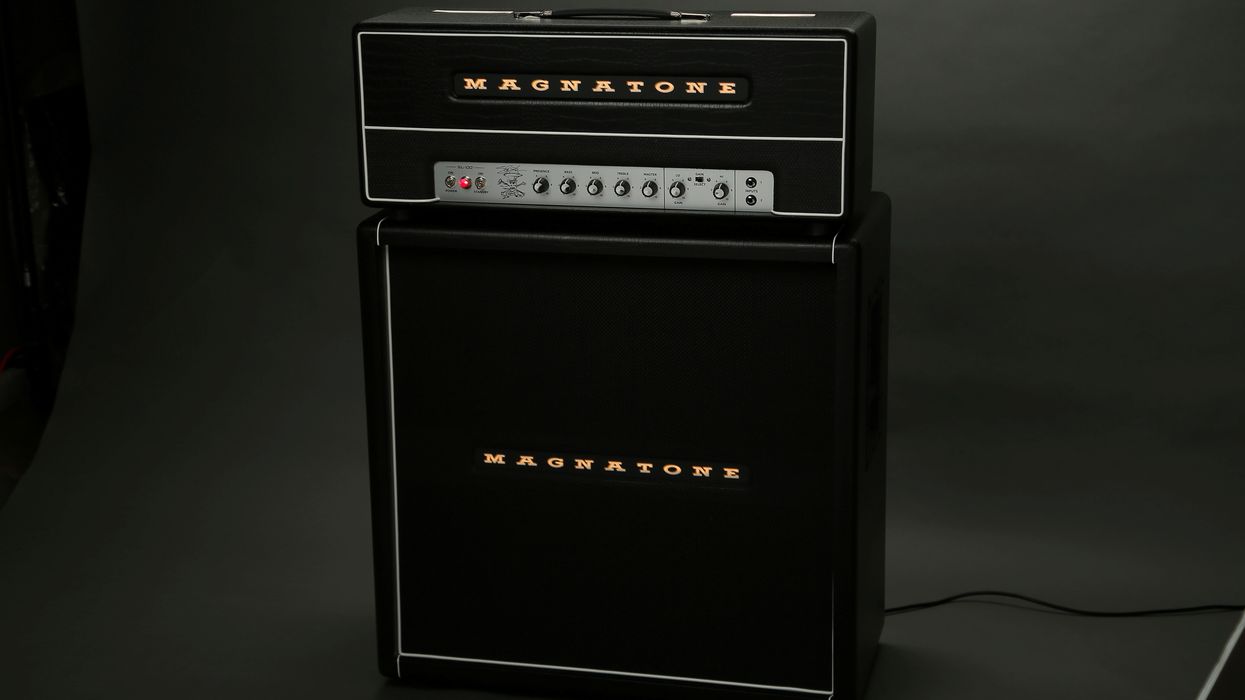

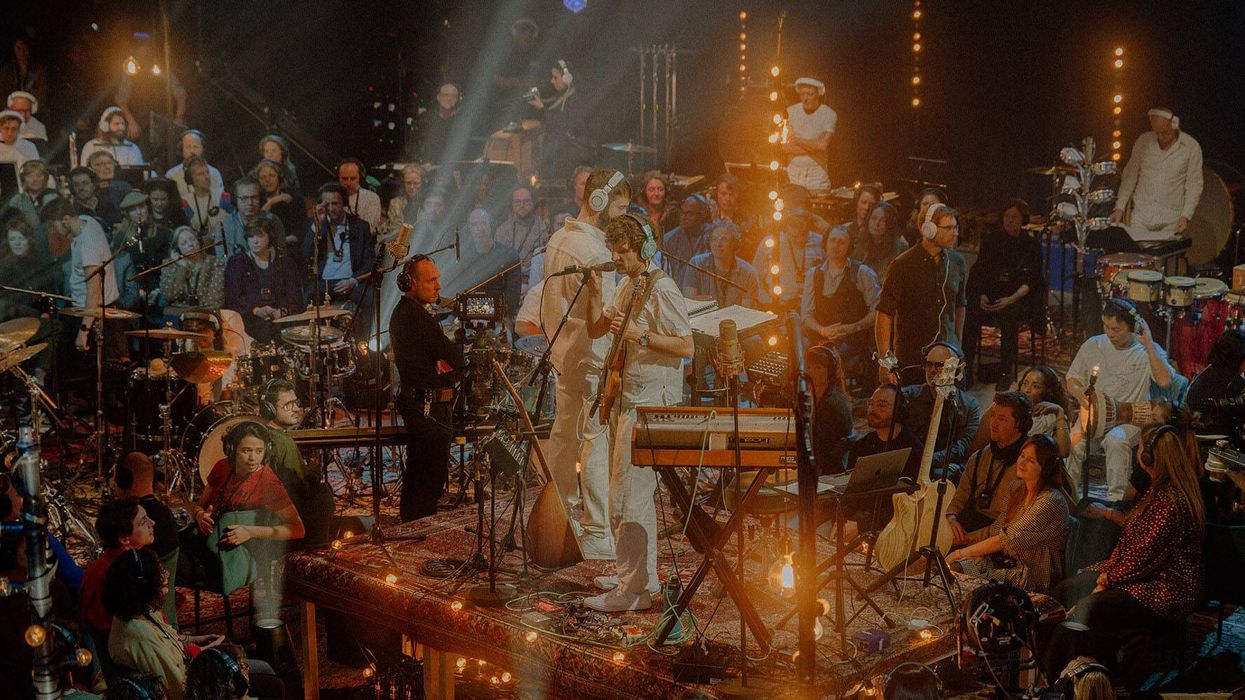
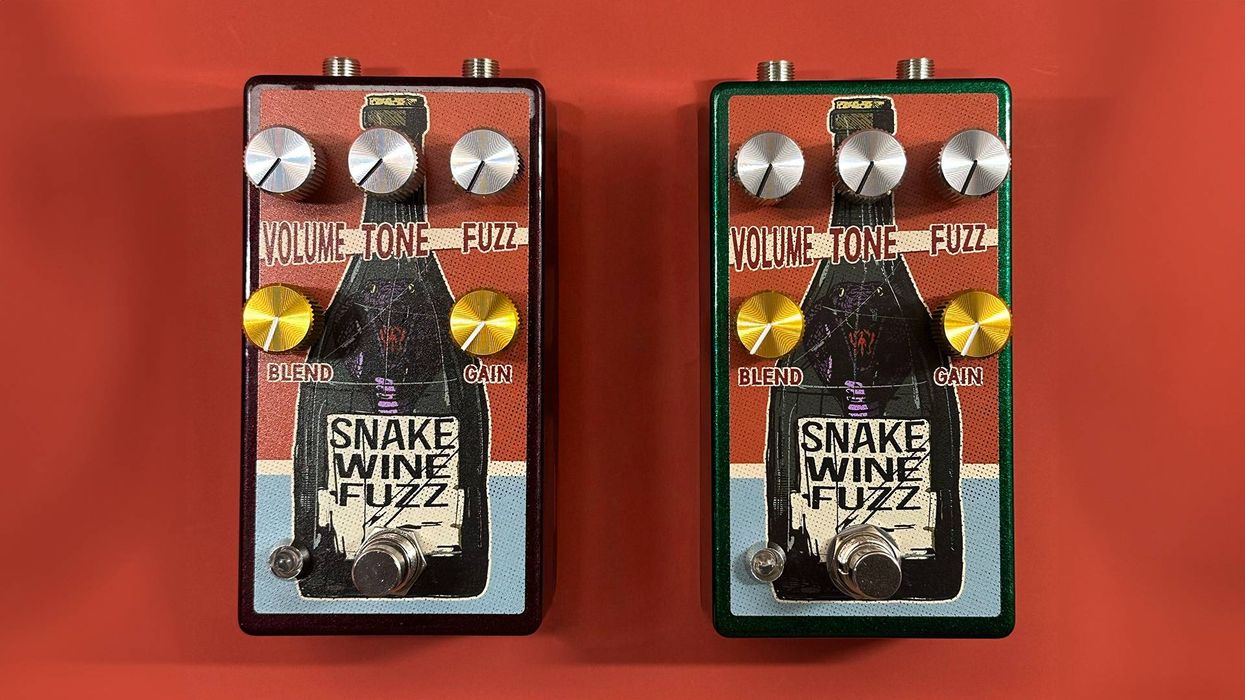



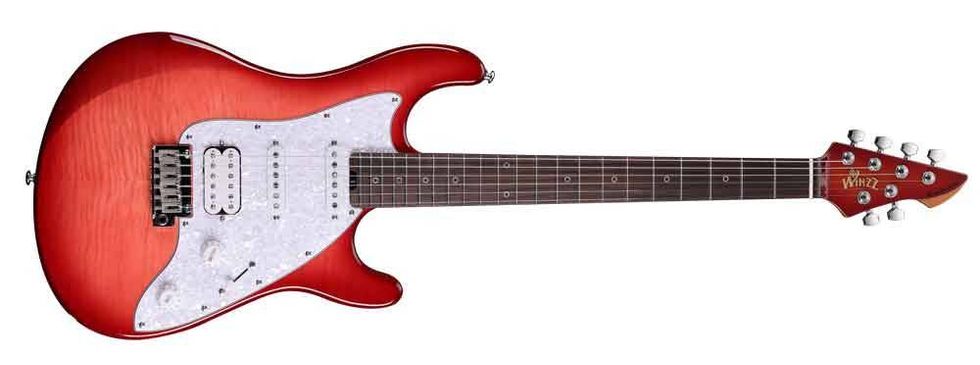
![Rig Rundown: AFI [2025]](https://www.premierguitar.com/media-library/youtube.jpg?id=62064741&width=1245&height=700&quality=70&coordinates=0%2C0%2C0%2C0)



![Devon Eisenbarger [Katy Perry] Rig Rundown](https://www.premierguitar.com/media-library/youtube.jpg?id=61774583&width=1245&height=700&quality=70&coordinates=0%2C0%2C0%2C0)


